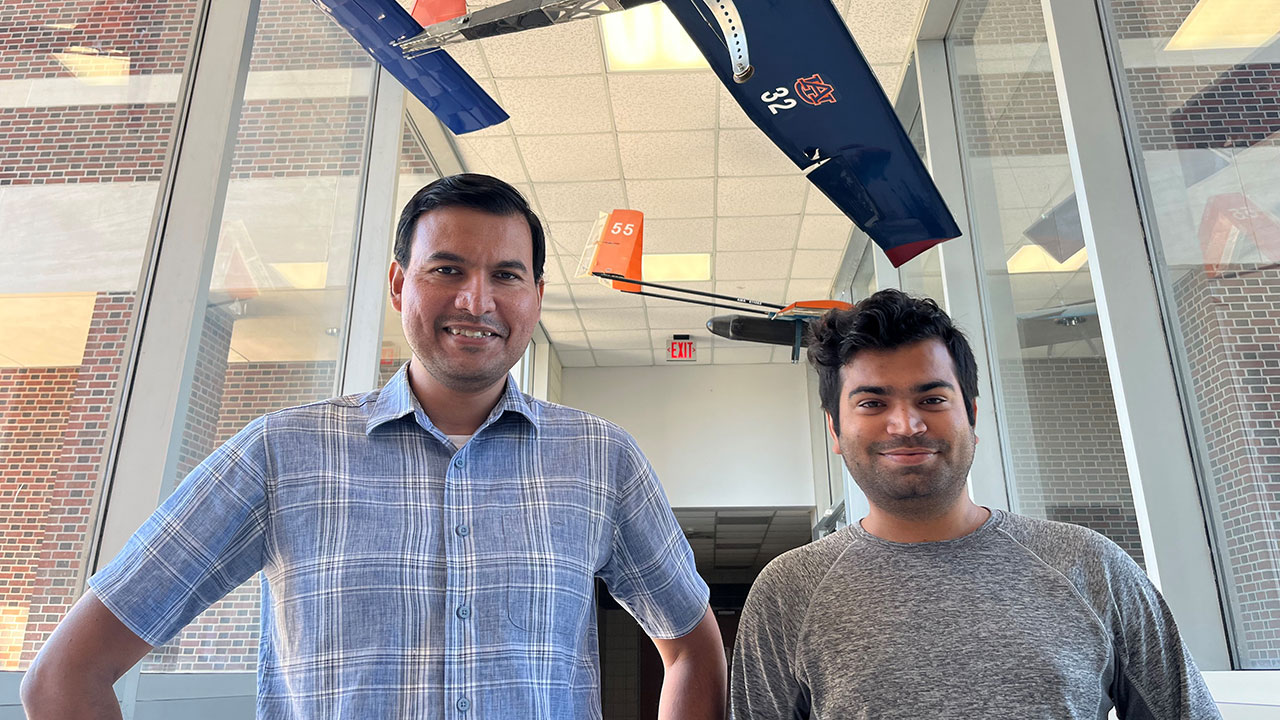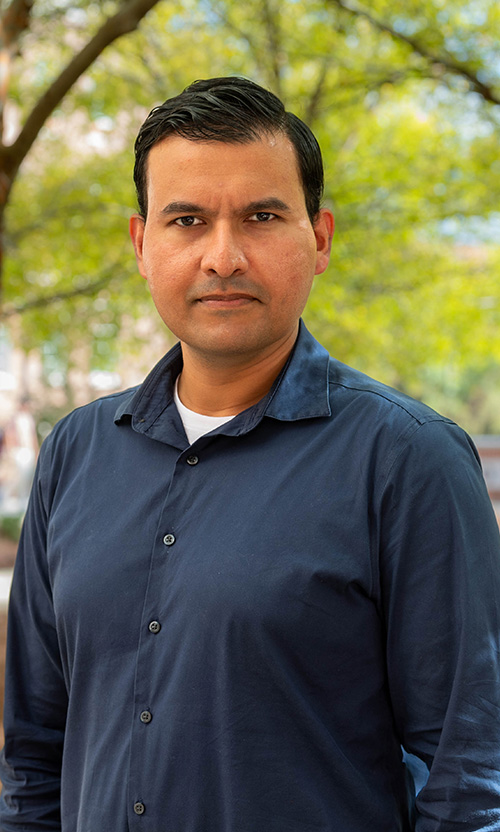Aerospace engineering assistant professor, student earn Best Paper Award for urban air mobility research
Published: Nov 8, 2022 10:15 AM
By Joe McAdory
Urban air mobility aircraft, which take off and land vertically, will one day move from concept to reality, but a number of technical questions remain.
How many passengers does it make sense to design these aircraft to carry? What speed should they fly at and how powerful must their motors be in order to carry that many occupants at that speed? How does the size of the aircraft grow with travel distance? Also, could a hybrid design with a battery and also a fuel-burning propulsion system be more advantageous than using a purely electric vehicle, depending on trip distances?
These questions, and others, were investigated by Imon Chakraborty, assistant professor in aerospace engineering, and Aashutosh Mishra, doctoral student in aerospace engineering, in their award-winning research paper, “Sizing and Analysis of a Lift-Plus-Cruise VTOL (vertical takeoff and landing) Aircraft with Electrified Propulsion Systems.” The paper was presented earlier this year at the AIAA AVIATION Forum in Chicago between June 27 and July 1. It received the “Best Paper” award from the American Institute of Aeronautics and Astronautics (AIAA) Electric Aircraft Technology Technical Committee at its recent conference in Chicago. The AIAA is the professional engineering society for aerospace engineers. The award-winning paper is available here. Recently, this work was also accepted as an archival paper in the AIAA Journal of Aircraft. The journal version of the paper can be accessed here.
Chakraborty, Director of the Vehicle Systems, Dynamics, and Design Laboratory (VSDDL), summarized some of the findings.
“Our study shows that depending on what the battery technology level is, if the trip distance is short enough, it might make more sense to design an all-electric (battery-powered) aircraft for that mission,” he said. “But given current battery technology, above a certain threshold trip distance, the all-electric aircraft would become too heavy, and it would make more sense to design a hybrid-electric or turbo-electric version. In both these alternatives, electrical power is used for propulsion, but in different ways. In the hybrid-electric design, electric power generated off a fuel-burning gas turbine engine and electric power supplied by a battery work together to propel the aircraft. In the turbo-electric design, all the electric power used for propulsion is generated entirely off the gas turbine, and batteries are not used for propulsion. Our paper identified the threshold criteria for these designs.”
Chakraborty said the award is further validation of the work being done at VSDDL. “We did this research using a tool that we developed in-house called Parametric Energy-based Aircraft Configuration Evaluator (PEACE),” he said. “This is the second Best Paper award that we have received for work done using PEACE.”
He also spoke of the importance of AIAA technical conferences for students and young professionals.
“At these conferences, there are attendees who are affiliated with urban air mobility companies, and we receive probing questions from them,” he said. “This is a very exciting place to be for students like Aashutosh and very exciting for the lab as well, because these industry representatives are going to take note of where these people come from.
“For a student, it’s all about timing. You’ve got to be working on the right research when it’s popular. Graduate students like Aashutosh, who are working on urban air mobility vehicles, are at the right point in this wave of interest. They’re doing a good job and there’s a good chance that they can be absorbed within that segment of the industry when they graduate.”
Mishra, a graduate research assistant in the VSDDL and recent AIAA Luis de Florez Graduate Award in Flight Simulation winner, said he hopes to use his Auburn Engineering experience and work with vertical takeoff and landing aircraft toward a career within the industry one day. He aims to develop a unified vehicle design and simulation framework that incorporates assessment of aircraft stability and control in the design iteration, and in the next step, a real-time flight simulation of the developed concept can be carried out to better understand the dynamic behavior of the vehicle during flight.
“It’s very gratifying to know that the work that I’ve been doing in the lab is being recognized under the umbrella of a large organization such as the AIAA,” Mishra said. “Receiving recognition from this organization where people believe in what we’re doing is very motivating to me and reassures me that our work is valuable to the community. It is an honor for me to get recognized for the work I have been conducting in the field of urban air mobility vehicle model development and simulation, and I feel inspired to contribute to the best of my abilities towards connecting the gap between a conceptual design and the actual flight through sizing and real-time flight simulation studies.”
Media Contact: , jem0040@auburn.edu, 334.844.3447
Aerospace Engineering Assistant Professor Imon Chakraborty and doctoral student Aashutosh Mishra


